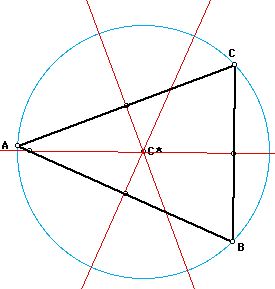
by
Summer Brown

We can clearly see that the three perpendicular bisectors intersect in a single point. But why? I will provide a proof of this observation.
Proof:
We begin by finding the midpoints of two sides of the triangle.
Call the midpoint of segment AC point D and the midpoint of segment BC
point F. Construct the perpendicular bisectors of each midpoint respectively.
The dashed lines below represent the perpendicular bisectors. The
two lines will intersect in a single point, call it C*. C* is the
circumcenter of Triangle ABC.
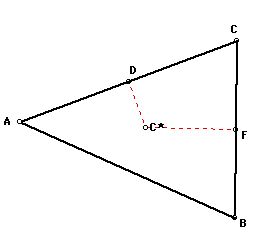
Next, construct the segments from the circumcenter to each vertex on Triangle ABC. These segments are shown below in green.
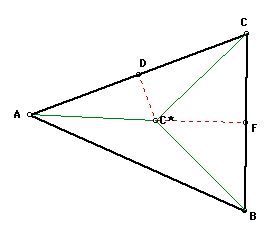
The green segments will constitute the radii of the circumcircle. With center C* and radius AC*, BC*, or CC*, we can construct the circumcircle.
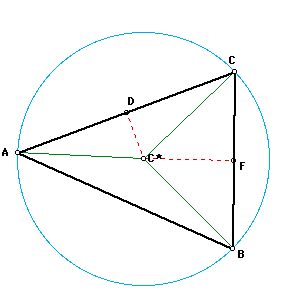
To prove that the perpendicular bisectors of a triangle are concurrent, one must show that a perpendicular to segment AB through the circumcenter C* will pass through the midpoint of segment AB.
Construct the perpendicular line from point C* to AB. Label the point of intersection on segment AB point E.
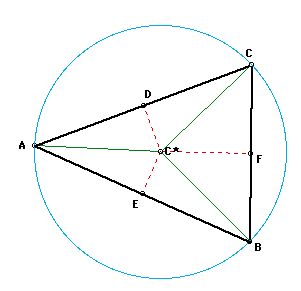
We wish to show that AE is congruent to EB. This will prove that E is the midpoint of segment AB.
Since C*E is a perpendicular, it forms two right angles, angle AEC*
and angle BEC*.
We know that the segment C*E is congruent to itself by the identity
property.
We can show that AC* is congruent to BC*. Click
here to see the proof.
Thus, using the Pythagorean Theorem:
(AE)2 + (C*E)2 = (AC*)2
and
(EB)2 + (C*E)2 = (BC*)2
Subtracting these two equations we get:
(AE)2 - (EB)2 = (AC*)2 - (BC*)2
Since AC* is congruent to BC*, the right hand side of the equation becomes
0.
Thus, (AE)2 - (EB)2 = 0
(AE)2 = (EB)2
(AE) = (EB)
Hence, AE is congruent to EB. And E must be the midpoint of segment AB. Therefore, the perpendicular bisector of AB passes through the circumcenter C*. Thus, we have proven that all three perpendicular bisectors are concurrent.